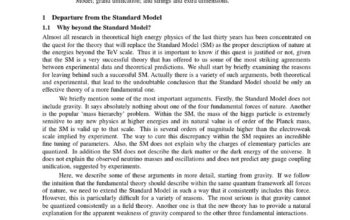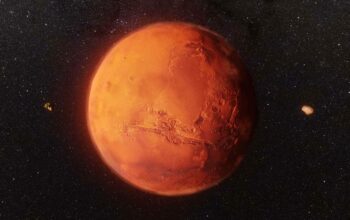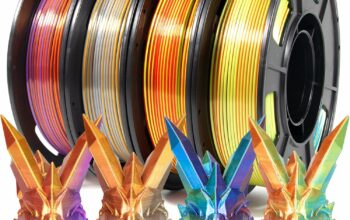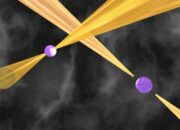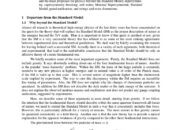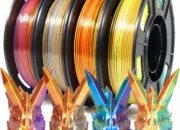Superconductivity, a phenomenon that eludes classical descriptions of electrical conductivity, has fascinated scientists since its discovery in 1911. The lineage of research in this domain has burgeoned over the years, particularly with the advent of new materials and an evolving understanding of quantum mechanics that govern electron behaviors. Within this emergent field lies a captivating inquiry into the correlation between molecular structures, specifically larger buckyball formations, and their propensity for superconductivity. This article delineates the current understanding of superconductors, explores the structural attributes of fullerene molecules, specifically larger buckyballs, and elucidates their interactions with magnetic fields.
At its core, superconductivity is characterized by the complete loss of electrical resistance within specific materials when cooled below a critical temperature. This remarkable phenomenon enables the unimpeded flow of electric current, leading to numerous technological applications such as magnetic resonance imaging (MRI), magnetic levitation, and lossless power transmission. Traditional superconductors have primarily included elemental metals and alloys, with recently discovered high-temperature superconductors expanding the scope of materials exhibiting this elusive property.
The hybridization of electron orbitals plays a pivotal role in the manifestation of superconductivity. It is widely acknowledged that the pairing of electrons, known as Cooper pairs, underpins this phenomenon. However, the mechanisms facilitating the formation of Cooper pairs remain a topic of intense debate. Pairing can occur through phonon-mediated interactions or more complex interactions, such as spin fluctuations in magnetic systems. The integration of larger molecular structures, particularly buckyballs, into this framework reshapes our conceptual landscape on superconductivity.
Fullerenes, characterized by their spherical, tubular, or ellipsoidal geometric configuration, are made up of carbon atoms arranged in a way that forms a closed surface or three-dimensional network. Buckminsterfullerene, or C60, is the most well-known example, yet emerging research suggests that larger variants, such as C70 and C84, present enhanced superconducting capabilities. The intrinsic geometry of these molecular configurations, facilitating increased electron delocalization, appears to catalyze more robust interactions with magnetic fields and phonons.
Investigations into larger buckyballs reveal a lattice structure that lends itself to favorable electronic interactions. The capacity for these larger molecules to host additional electrons leads to a greater charge density within the material, directly influencing its superconducting properties. As the size of the buckyball increases, the degrees of freedom available for molecular vibrations correspondingly rise, allowing these vibrations to contribute to the energy landscape critical for Cooper pair formation. Specifically, in the context of the molecular band theory, larger buckyballs can foster a more favorable band structure for superconductivity, yielding additional pathways for electron pairing.
Moreover, the synthesis of superconducting materials often involves the introduction of alkali metals into fullerene matrices. This hybridization process engenders a rich tapestry of interactions that can induce superconductivity at higher temperatures. By replacing some of the carbon atoms within the buckyball with elements from the alkali group, such as potassium or sodium, the resulting ionic character further enhances the material’s superconductive tendencies. Such pairings exemplify the intricate dance between heteroatom substitution and electronic structure modification, propelling the discourse surrounding the potential applications of these advanced materials.
Interestingly, the magnetic interactions also warrant a thorough analysis. Larger buckyballs’ unique geometric configurations allow for a fascinating interplay with external magnetic fields, a phenomenon intimately connected to superconductivity. When subjected to magnetic fields, the altered electronic configurations enable these structures to shield themselves from external disturbances, a property known as the Meissner effect. This magnetic exclusion contributes to the unique characteristics that define high-temperature superconductors, reinforcing the notion that size does indeed matter in the realm of fullerene superconductors.
The prospect of tapping into the capabilities of larger buckyballs heralds a paradigm shift in the research and application of superconducting materials. With the ongoing exploration of different fullerene derivatives and the potential for novel hybrid materials, there exists a promising frontier rich with opportunities for innovation. Applications in quantum computing, wherein the need for lossless information transfer is paramount, benefit directly from advances in superconducting technologies. Similarly, advancements in energy storage solutions beckon a future wherein superconducting materials emerge as critical components, revolutionizing the efficiency of our energy infrastructure.
In synthesizing the research surrounding superconductivity and the structural nuances of buckyballs, a compelling narrative emerges. Larger molecules not only alter the electronic properties of materials but also redefine the fundamental understanding of how superconductivity can be achieved and maintained. The interplay between molecular geometry, electron interactions, and magnetic influences encapsulates a rich domain of inquiry that invites continued exploration.
As our pursuit of knowledge continues unabated, the intersection of material science and quantum physics becomes increasingly complex and interwoven. The ongoing study of larger buckyballs presents an intriguing avenue for future research, with the potential to unlock novel superconducting materials with substantial applicability in technology and industry. Ultimately, the scientific journey into the realm of molecular superconductors beckons the collective curiosity of the research community, shining light upon a path rife with promise and innovation.



